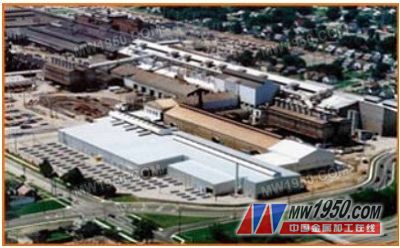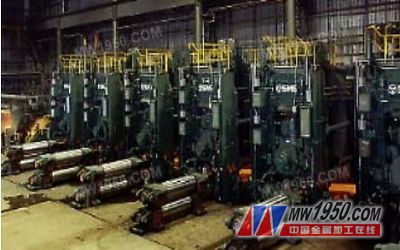I. Introduction
Mills are recognized as the most challenging and demanding bearing applications. In many key parts of the mill, the bearings are exposed to heavy loads, shock loads, high and low speeds, high temperatures and high pollution. The roll neck bearing in the rolling mill equipment can be said to be the heart of the rolling mill. It is precisely because of this demanding operating environment that the demand for high performance bearings is required. Only high-performance bearings ensure that mills operate continuously in extreme conditions, reducing downtime and helping customers reduce costs and create value. The installation and maintenance of the roll neck roll bearing not only prolongs the service life of the bearing and other parts of the mill, but also prevents the serious failure caused by the bearing failure early, thus avoiding the sudden high downtime loss. For this reason, in the process of using the roll neck bearing, attention should be paid to the technical requirements for its installation and maintenance, and the bearing-related operating procedures are followed.

Figure 1: Timken Harrsion Steel Plant
As a leading global bearing manufacturer and the world's first manufacturer of steel bearings, Timken began producing pure steel in the 1920s. By hand-operating the mill, Timken is in the metallurgical industry. With a deep understanding, we also know the needs of steel mill customers for bearing products and services, and develop many related products and services for rolling mills and their auxiliary equipment. In view of the common problems in the process of operating the roll neck bearing products, this paper will introduce the basic characteristics of the bearing by taking the Timken four-row tapered roller bearing and the double-row conical axial thrust bearing as examples. Key issues to be aware of during installation and maintenance.

Figure 2: Hot rolling four-roll mill
Second, the basic characteristics of the roll neck bearing
Four-row tapered roller bearings are widely used in rolling mill work roll bearings. Four-row tapered roller bearings can withstand radial and axial composite loads. Therefore, the work roll with a small axial force can directly adopt the four-row tapered roller bearing to bear the axial load. For applications with large axial forces, high precision, or axial roll requirements, work roll bearings typically incorporate additional axial thrust bearings to share the radial bearing forces.
Timken's straight-hole four-row tapered roller bearings are currently available in two structural forms, the TQOW and 2TDIW constructions, which are primarily used for radial position support of work rolls. The inner rings of these two types of bearings are straight holes, preset internal clearance, lubricating oil from the outer ring spacer oil inlet and oil groove into the bearing, and the bearing rollers are in face-to-face installation. The difference between TQOW and 2TDIW structure is mainly: TQOW bearing outer ring consists of two single outer rings, one double outer ring and two outer ring spacers, while the 2TDIW bearing outer ring consists of four identical single outer rings and three It consists of an outer ring. Bearings have the same load carrying capacity for the same series of TQOW or 2TDIW constructions with the same number of rollers.
The 2TDIW construction can be adjusted to a smaller range by adjusting the width of the inner ring spacer by adding an outer ring spacer. Rolling mills are increasingly using the non-adjustable bearing inner ring locking device instead of the original screw nut device design. The 2TDIW structural four-row tapered roller bearing is more and more widely used. In addition to the advantages of controlling the tolerance of the inner ring width of the bearing, the four single outer ring structure is more conducive to the self-eccentricity of the bearing when it is subjected to the bending force, so that the stress of the bearing is dispersed, thereby avoiding local stress concentration of the bearing. . Figure 3 shows the different structure of TQOW and 2TDIW.
In roll systems with large axial loads, such as roll axial roll systems, additional thrust bearings are typically required to achieve the desired bearing performance. Since the axial load of the roll has bidirectionality or the direction is difficult to judge, the thrust bearing usually adopts a double-row structure. Timken's patented thrust double row roller bearing TDIK has been widely used for support roller and work roll axial position support. This type of bearing has a large contact angle, a low K factor, a keyway on the inner ring to prevent running, and a bearing spring ring preloaded with a spring device, as shown in Figure 4. The axial load of the roll and its direction of action will cause the thrust bearing to be carried in a single row, and the other row of bearing rollers will be in an unstressed state. In the use of bearings, if the load is too low, no load or too large, the bearings will be damaged early. The pre-tightening force generated by the TDIK bearing outer ring pre-assembled spring ensures that the force end roller and the outer ring raceway are not tightly fitted to avoid the skew of the force end roller during running, slipping, impacting the cage, etc. Eventually, the cage is broken and the bearing fails prematurely.
Next page
Chain Link Fence
Chain Link Fence Introduction:
widely used in baseball field, race track, Playground, Farm, Grassland, Factory, Road Fence, ,Fence Gate, Home & Houses, Power Station and so on; or even to set up temporary barriers at construction or event sites.
Chain Link Fence,Chain Link Fencing,Pvc Chain Link Fence,Pvc Decorative Chain Link Fence
HeBei Bosen Metal Products Co.,Ltd , https://www.hbbosenfence.com
![<?echo $_SERVER['SERVER_NAME'];?>](/template/twentyseventeen/skin/images/header.jpg)